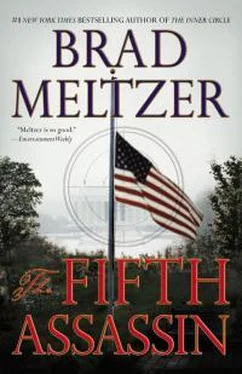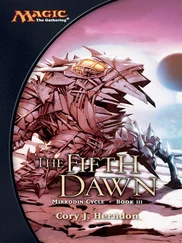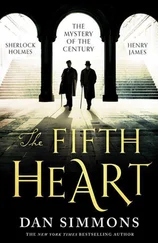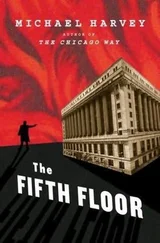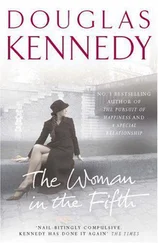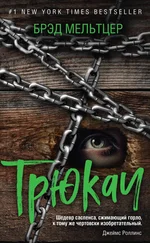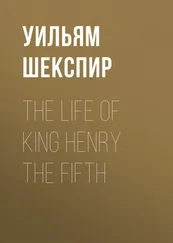I shoot Tot a look. “You let him listen the entire time?”
“There’s no record of bail being posted,” Mac interrupts. “All it says is released . Either they had nothing on him, or Marshall’s got big friends who don’t mind calling in big favors.”
Tot doesn’t have to say it. This is it. The President’s hitting back.
When I started at the Archives, I learned that good archivists follow the rules, while great archivists follow their hunch.
“They said he killed a preacher?” I ask, still staring down at Marsh’s mugshot.
“Yeah, with your name in his pocket. Why?”
“No reason.”
Tot’s blind in one eye, but he still sees all. “Beecher, I know that look. And I know that brain of yours never lets anything go—it’s what makes you a great archivist. But whatever you’re thinking with Marshall, you need to stop remembering. This isn’t your childhood friend anymore.”
Of course, Tot’s right. I look at Marsh’s burned face now, almost like a mask. Then my mind flips back to Wisconsin, scouring old memories and searching for connections. Maybe this is another trap by Clementine. Or the President, who wants to shut me up and still blames me for the death of his best friend. Or maybe he’s after the Culper Ring. But as Marsh’s dead eyes stare back at me—
“I can get us into the crime scene,” Immaculate Deception announces through Tot’s phone.
He acts like it’s good news. And it is. The more information, the better. But in my head, I’m still replaying Tot’s earlier warning: that the President already knows how this ends. So as we rush out of the stacks and the automatic lights pop on in our wake, I can’t shake the feeling that everything we’re now doing…
… is exactly what the President wants.
5
There’s a band of yellow police tape covering the side door. Tot’s too old to duck under it. He tugs it aside, letting it flap in the air like the tail of a kite. I follow slowly behind him, into the scene of the crime.
As we enter St. John’s Church, it looks like an old colonial house filled with office furniture.
“Y’mind signing in for me?” a friendly voice calls out.
On our right, a guy with tightly cropped blond hair and an athletic build that stretches his dark suit approaches us with such an authoritative stride that even Tot takes a step back.
“We’re here to see Hayden Donius,” Tot says, though I don’t recognize the name.
“Just sign in. Clipboard’s over there,” he says, pointing to an antique side table, his arm muscles flexing from the motion. “Here’s a pen; don’t steal it,” he jokes, shoving a blue-and-orange University of Virginia pen into Tot’s hands.
In a blur, he’s gone, leaving Tot and me alone with…
“Hayden Donius…” a tall man with a soft voice and an out-of-date, gray, three-piece suit says. With an anxious both-hands handshake, he introduces himself as the executive director of the church. “And you’re the friend of—”
Tot nods, cutting him off. The two men exchange a long glance, and I remember what Tot said when he first invited me into the Culper Ring. Their membership is small, but their friends are many.
“I-I truly… we appreciate you coming…” Hayden says, his voice shaky as Tot breezes past the side table, ignoring the sign-in sheet and eyeing the wide window on our right.
I see what Tot’s looking at. Through the window, past the barren trees of Lafayette Park, there’s a perfect view of the city’s most famous landmark. The White House. Home of President Orson Wallace.
“Pretty darn close to the murder,” I say with a glance.
Tot nods, well aware of how fishy this is—and how familiar.
Two months ago, it was Clementine. Today, it’s Marshall. Two murderers, both from my same tiny hometown, and both this close to the President of the United States. It gets even worse when I think about how fast they let Marshall out of jail even though he’s supposedly a murder suspect. Even if Tot didn’t tell me the President was gunning for me, how many people have pull like that?
“We should get started,” Tot says, knowing that the only way to stop the President is to prove what he’s really doing.
Leading us inside, Hayden looks tired, like he’s been up all night.
I glance around. There are barely six offices in the entire church. This place is small. The rector who had his throat slashed wasn’t just some coworker. He was Hayden’s friend.
“Sorry, fellas,” a young black policeman says as we approach the office at the end of the main hall. “Detectives said no one gets inside until they’re back from lunch and the techs are done.”
“But that’s my office,” Hayden protests. “I need to be able to do my job.”
The officer nods but doesn’t budge. “They say no one , they mean no one . I don’t make the rules until they give me the suit and tie.”
He waits for us to argue, but from our spot near the doorway, we can see everything inside: Two evidence technicians—one Asian, one bald—flit around the office, making notes and taking a few final photographs. In the corner, a few yellow plastic evidence placards are marked with a directional arrow that shows the blood spatter sprayed across the bookcase and the window. That’s where the killer slit the rector’s throat.
It’s all in the police report that Mac got for us on the way here. One shot in the back; throat slashed in the front. Hayden heads up the hallway toward the actual church and pews, but it’s not until we reach a set of open double doors, with a strip of yellow police tape across them, that he suddenly slows down.
To bring us in here, he’s breaking the rules. Breaking the law. Luckily, he knows that some things are more important.
“Promise you’ll be fast,” he begs as I lift the police tape and rush inside. The ceiling rises, revealing ornate balconies, the wide dome, and the stained glass windows that fill the Church of the Presidents with a kaleidoscope of morning light. The room stretches back with half a football field worth of pews, but it’s the familiar church smell of rose candles, old books, and stale air that takes me back to childhood and fills me with memories of my own dead father.
“They think the killer started here,” Hayden says, leading us up the aisle. On both sides of us, on the armrest of each pew, a small gold plate identifies donors. Every pew is spoken for, except for the one that’s about a third of the way from the altar: Pew 54. The gold pew plate reads simply, The President’s Pew .
“I’m surprised the President doesn’t sit in the front row,” Tot says.
“Blame James Madison,” Hayden explains. “When he was President, they gave him first dibs on one of the pews, but he said, ‘Pick one for me.’ So they put him as a person of the people. Right in the middle, like everyone else.”
“And President Wallace abides by that?” I ask.
“He’s only been here once. Some leaders worship more than others. But even Presidents want to be a part of history.” As he says the words, he points inside the pew. On the floor, there are four kneelers with needlepoint cushions for people to pray on. Each cushion has a different name in bright gold letters: George W. Bush. Barack Obama. Leland Manning . And an ancient one—the very first one from two hundred years ago—that says James Madison .
“Where’s the one for President Wallace?”
“You only get it when you leave office,” Hayden says, still anxious to keep us moving as he strides toward the back of the room. In every pew are more kneelers. Ronald Reagan. Woodrow Wilson. Bill Clinton. Harry Truman. At one point in time, every single one of them came into this room and bent a knee to God. It should be humbling. But as I picture our current President—and the power he threatened to level against me—I don’t even want to think about it.
Читать дальше
